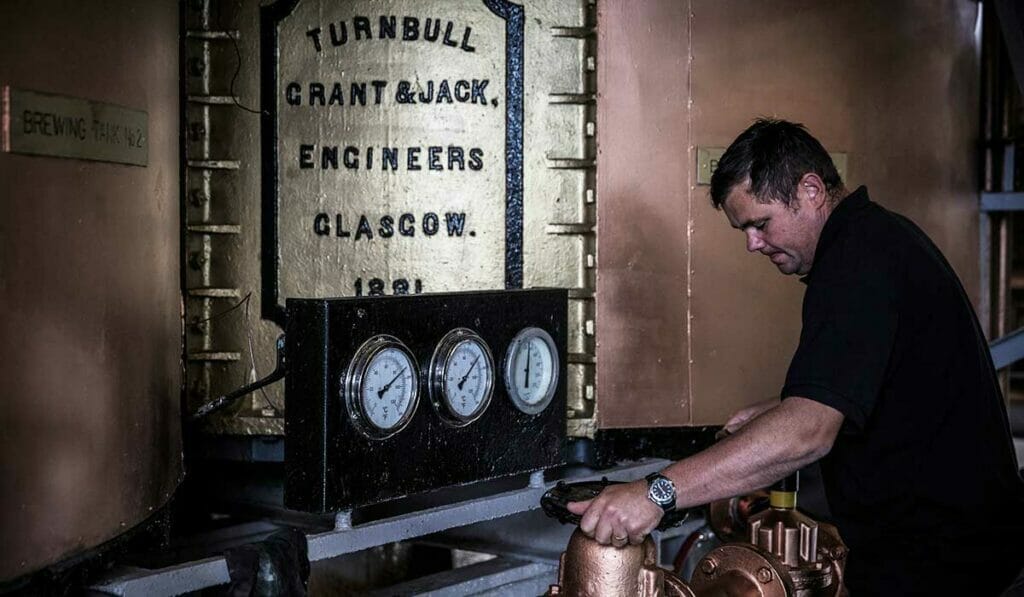The Scots have more than a few witty lines to describe the weather in their homeland. “There are two seasons in Scotland. June and winter,†said comedian Billy Connolly. And there’s an old proverb, “Cast not a clout till May be oot,†which means, “Don’t discard your winter clothing until May.†And in the lead-up to my trip I heard, more than once: “In Scotland, there’s no such thing as bad weather, only the wrong clothes.â€
So you can imagine my surprise at the brilliant blue skies on my week-long trip, in April, to the UK’s northernmost country. The scenario feels most absurd at Currie Sands, a sand-covered beach on the Isle of Islay in the Inner Hebrides, an archipelago off the west coast of Scotland.
Sunlight shimmers off the water as Raymond Tibbs pours a glass of The Laddie Eight, an eight-year-old single malt Scotch made at Bruichladdich (pronounced brook-lah-dee) – one of nine distilleries on the 40km-long island, which is also home to Ardbeg, Lagavulin and Laphroaig.
“When the light hits the water just right, you get this beautiful aquamarine colour. It’s the reason we chose the colour for our bottles. We call it Laddie Aqua,†says distillery ambassador Tibbs. “People ask if we get in trouble because it’s so similar to Tiffany Blue. But no. However, it also signifies something special when someone receives one of our boxes.â€
Attention to detail is just one of the things that set Bruichladdich apart from its contemporaries. The boutique distillery – which opened in 1881, closed in 1994, and was revived in 2001 – uses original machinery and techniques from the Victorian era. But, while the team respect distilling as an ancient art, they don’t live in the shadow of the past. Instead, they strive for innovation, while indulging their passion for terroir.
Traditionally associated with winemaking, the concept of terroir is rarely applied to whisky. But team Bruichladdich are a unique bunch. “We believe that if you buy an Islay whisky, it should have as much of the place as possible in the bottle,†says Tibbs. The team use only Scottish barley to make the wort. The spirit matures for its entire life on Islay, in the distillery’s warehouses on the shores of Loch Indaal. And the whisky is bottled at the distillery using Islay spring water.
Bruichladdich is also known for its small batch releases. “We like experimentation,†says head distiller Adam Hannett. “We don’t seek consistency in our whiskies. We offer magical parcels because they’re good just as they are. That puts some people off, and that’s okay. We’re not making whisky for everyone.â€
“WE DON’T SEEK CONSISTENCY IN OUR WHISKIES. THAT PUTS SOME PEOPLE OFF, AND THAT’S OKAY. WE’RE NOT MAKING WHISKY FOR EVERYONE.â€
ADAM HANNETT, BRUICHLADDICH HEAD DISTILLER
This year, Bruichladdich will release four new products, packaged in bespoke opaque green bottles. They include the relaunch of the Port Charlotte 10, a heavily peated single malt; along with the codified and limited MC: 01, a 2009 vintage matured in marsala casks.
THE NEW KID ON THE BLOCK
After 15 years at Bruichladdich, the former master distiller, Jim McEwan, retired in 2015. But last year, McEwan announced a new project. On Islay’s north-east coast, halfway between the Bunnahabhain (pronounced boona-haabin) and Caol Ila (pronounced cool eye-luh) distilleries, Ardnahoe (www.ardnahoedistillery.com) was expected to open in May. It is the first new-build distillery on Islay since Kilchoman in 2005 – prior to that, it had been 124 years.
For McEwan, old habits die hard. Just like Bruichladdich, Ardnahoe will use wooden washbacks (along with traditional worm-tub condensers), and the process will be entirely manual; there will be no computers on site. It will have the capacity to produce 500,000 litres of whisky per year. And McEwan hopes to have his first Scotch out in five years – if it’s ready.
But the doors of Ardnahoe may be open to its first visitors as soon as next year, and it will be a sight to be seen. The steel-built, split-level distillery will house pot stills with the world’s longest lyne arms. And from the wraparound glass windows of the still house, guests will have a striking view of the Paps of Jura, the three mountains on the rugged Hebridean island across the water.
DIVINE INSPIRATION
One of Scotland’s most remote and breathtaking islands, Jura is home to one road, one pub and one distillery. And one literary masterpiece; it was where George Orwell wrote 1984. Here, about 230 people are outnumbered by 5,000 wild deer – not to mention casks of whisky. Inside just one warehouse at the Jura distillery, around 28,000 barrels are stacked eight-high.
“It’s like a cathedral in here,†says distillery visitor centre manager Rachael Jones of the chilly, eerily silent space. “It has the same feeling. Apparently it has something to do with the vibrations in the air.†Cathedral seems an apt description. Here in the warehouse, the air is thick with the scent of the evaporated spirit known as angel’s share. And it may here that Jura’s new signature style of single malt whisky, the Jura Sherry Cask Collection, spent years maturing.
Reminiscent of the distillery’s past – established in 1810, it was abandoned in the early 1900s, then resurrected in 1963 – this new collection has a clear view of the future. For the first time, Jura has married the classic styles of Highland and Island malts, resulting in a whisky that combines sweetness with a hint of subtle smoke.
“Combining two styles of whisky is a fairly unorthodox approach,†say distillery manager Graham Logan. “But it tells you where we are now and how committed we are to Jura, the community and our whiskies for the long term.â€
Maybe the blue skies mean more than a brief reprieve from the bleak Scottish weather. Perhaps, instead, they signify a forecast of good days ahead for the whisky makers of the Inner Hebrides.
PHOTOGRAPHY RACHEL LEES



